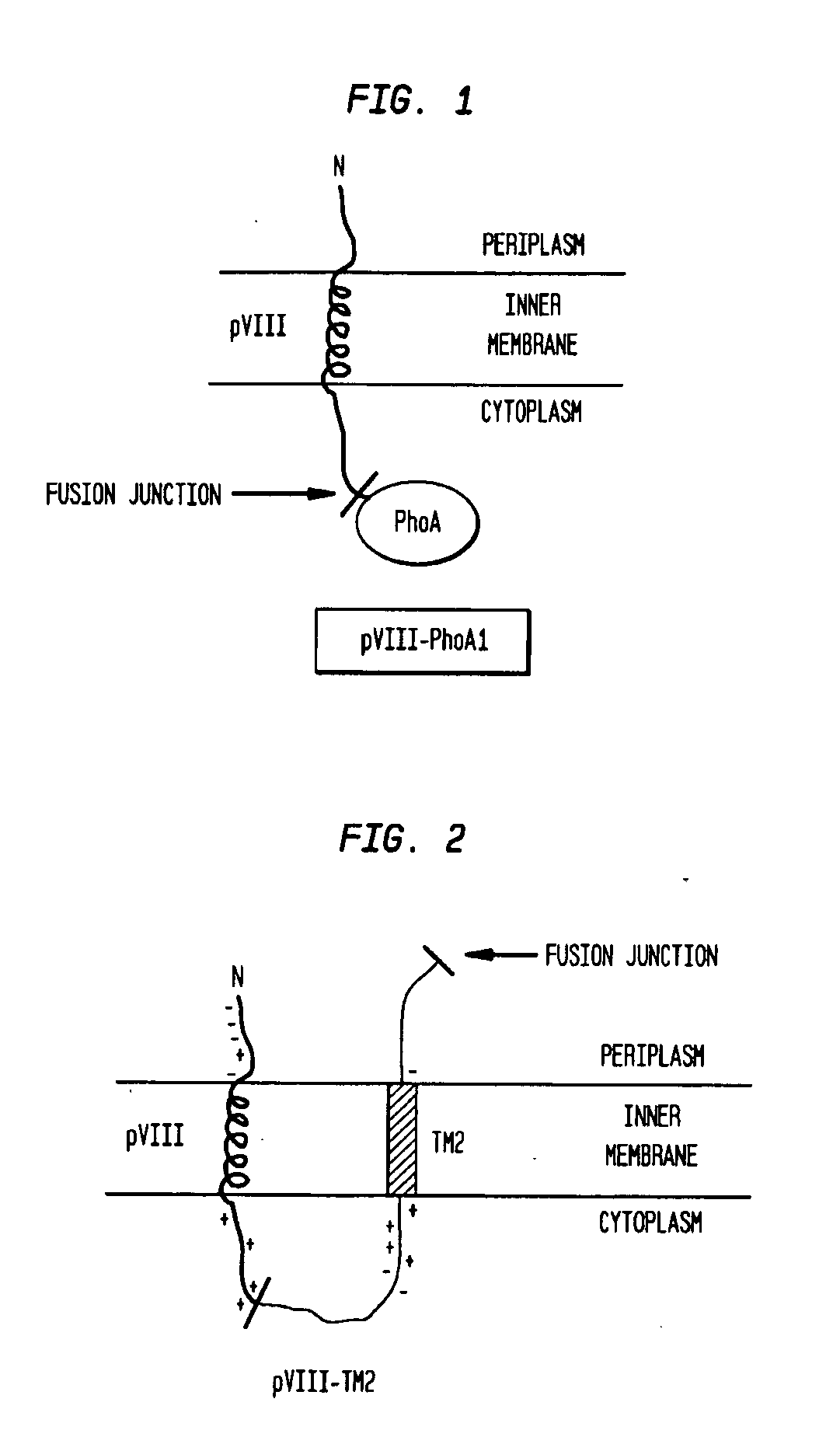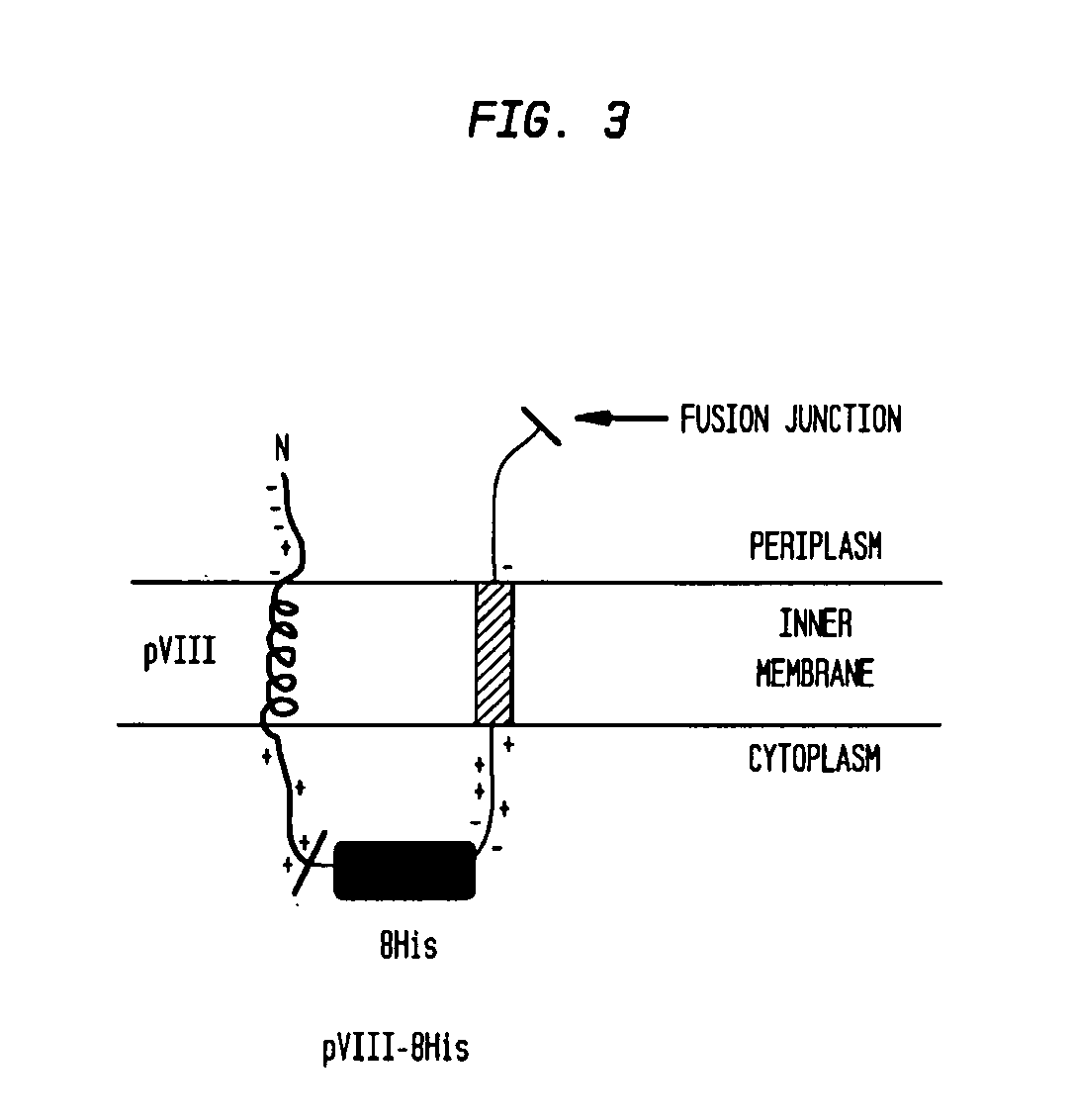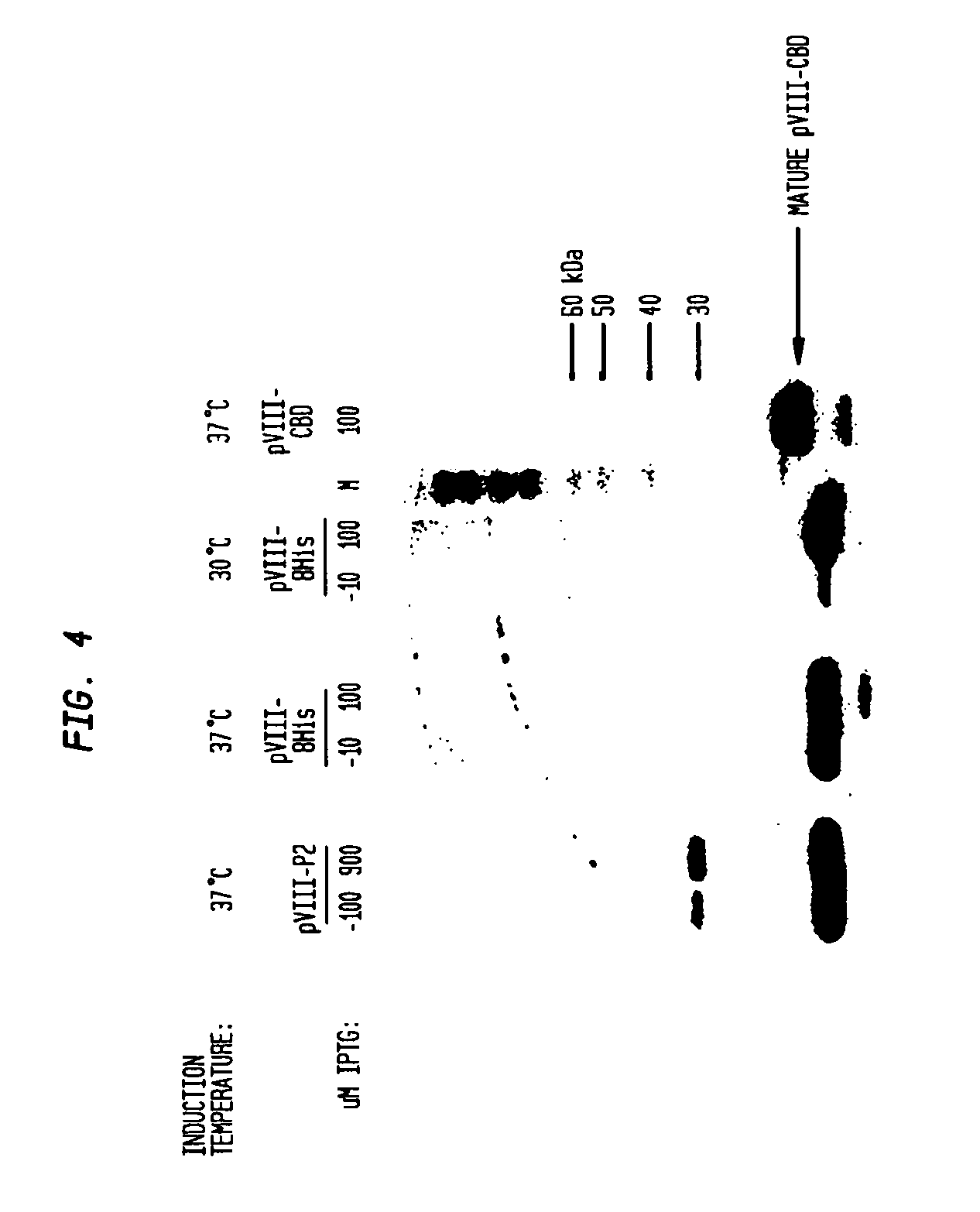Methods and Compositions for Targeting Proteins of Interest to the Host Cell Envelope
a technology of host cell envelope and composition, applied in the direction of peptides, polypeptides with his-tags, enzymology, etc., can solve the problems of inability to reliably overexpression recombinant membrane proteins, inability to accurately fold non-native proteins, and limited export to the periplasm
- Summary
- Abstract
- Description
- Claims
- Application Information
AI Technical Summary
Problems solved by technology
Method used
Image
Examples
example 1
Construction of Plasmid pVIII-PhoA1
[0113]Plasmid pVIII-PhoA1 (FIG. 14) was constructed from plasmid pVIII-P2. pVIII-P2 was digested with EcoRI to excise the P2 ORF. The remaining vector fragment pVIII-EcoRI (FIG. 15) was treated with Antarctic Phosphatase (NEB, Ipswich Mass.) to prepare for ligation of the PhoA gene fragment. Primers 344-112 and 344-113 were used to amplify the PhoA reporter gene from MG1655 genomic DNA. MfeI cloning sites are underlined:
Primer 344-113(SEQ ID NO: 25)5′-CCACCACAATTGGTCCTGTTCTGGAAAACCGGGCTG-3′Primer 344-114(SEQ ID NO: 26)5′-CCACCACAATTGCCGGCAGCGAAAATTCACTGCC-3′.
[0114]PCR amplification of the PhoA gene was accomplished with Phusion High Fidelity DNA polymerase (NEB #F-540S, Ipswich Mass.) according to recommended thermocycling conditions. The PhoA gene fragment was digested with MfeI (NEB #R0589S, Ipswich Mass.) and ligated into the EcoRI sites of the pVIII vector. Ligation clones were sequenced to confirm the entire pVIII-PhoA1 ORF. In the pVIII-P2 an...
example 2
Construction of Expression Vector pVIII-TM2
[0116]Expression vector pVIII-TM2 (FIG. 16) was constructed from plasmid pVIII-P2 as follows: A segment of the E. coli lepB gene (encoding SPase) was amplified from MG1655 genomic DNA using Taq DNA polymerase and primers 342-239 and 342-240. ApoI restriction sites are underlined:
342-239(SEQ ID NO: 29)5′-CCACCAGAATTTCGCGTCAGGCAGCGGCGCAGGCGGCT-3′.342-240(SEQ ID NO: 30)5′-CCAGAATTCGAGGATCCTGACGGGATCTGGAACGGTTC-3′.
The lepB gene fragment was digested with ApoI and ligated into the compatible EcoRI sites of the pVIII-EcoRI vector fragment described in Example 1. Ligation clones were analyzed for the proper orientation of the lepB gene fragment by sequencing the plasmid clones with a primer annealing at the Ptac promoter (NEB #s1260s, Ipswich Mass.). Clone c contained the desired ORF where pVIII is extended by a segment of the E. coli SPase protein. This segment (SPase amino acids 34-91) included part of the SPase cytoplasmic loop and the entire s...
example 3
Construction of Expression Vector pVIII-8His
[0117]Expression vector pVIII-8HIS (FIG. 17) was constructed from plasmid pVIII-TM2. pVIII-8HIS contains a poly-His sequence within the cytoplasmic loop to enable protein purification or immunodetection. pVIII-TM2 was mutated to encode a stretch of eight histidines in the cytoplasmic loop (replacing amino acids QAAAQAAA (SEQ ID NO:32) equivalent to positions 35-42 of SPase). This expressed membrane-targeting peptide was named pVIII-8His (FIG. 3) and efficient membrane assembly was confirmed by an immunoblot procedure using pVIII monoclonal antibody, which preferentially recognizes the mature N-terminus of pVIII after membrane insertion and processing by SPase in vivo (FIG. 4).
PUM
| Property | Measurement | Unit |
|---|---|---|
| Size | aaaaa | aaaaa |
| Hydrophobicity | aaaaa | aaaaa |
| Affinity | aaaaa | aaaaa |
Abstract
Description
Claims
Application Information
 Login to View More
Login to View More - R&D
- Intellectual Property
- Life Sciences
- Materials
- Tech Scout
- Unparalleled Data Quality
- Higher Quality Content
- 60% Fewer Hallucinations
Browse by: Latest US Patents, China's latest patents, Technical Efficacy Thesaurus, Application Domain, Technology Topic, Popular Technical Reports.
© 2025 PatSnap. All rights reserved.Legal|Privacy policy|Modern Slavery Act Transparency Statement|Sitemap|About US| Contact US: help@patsnap.com



